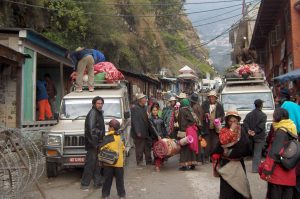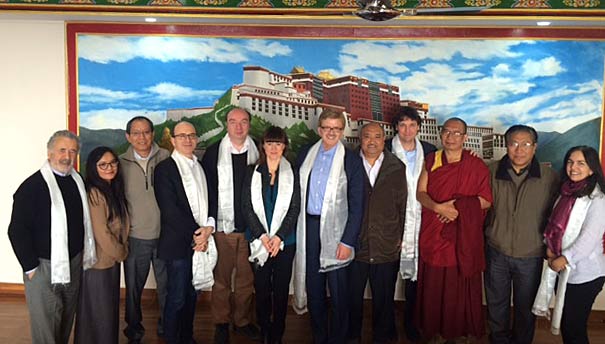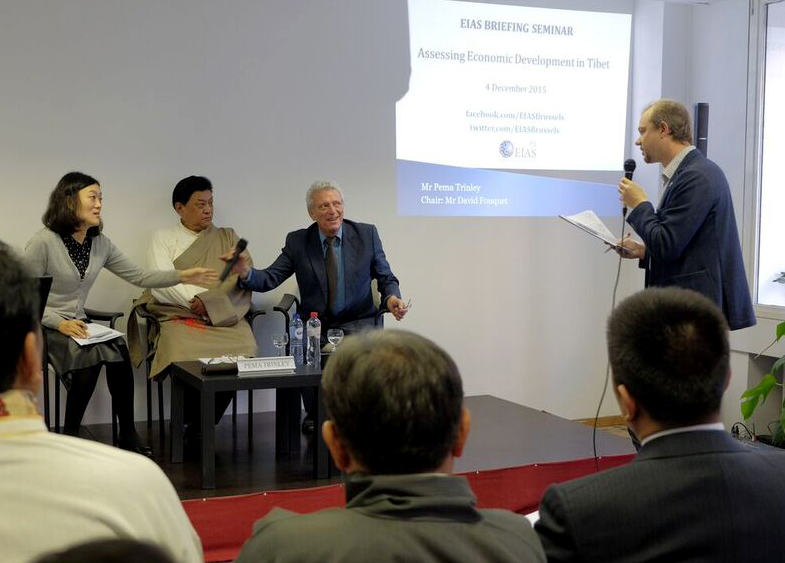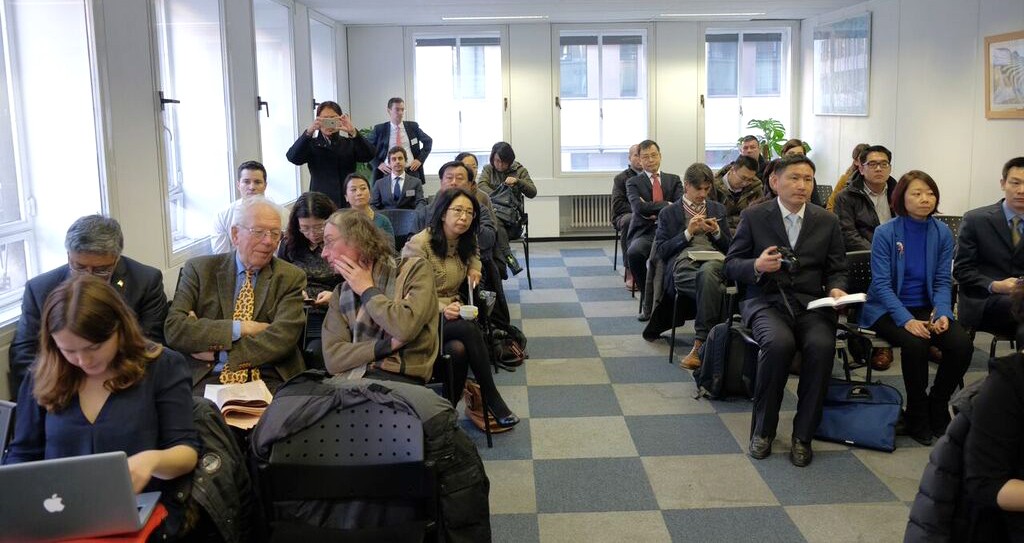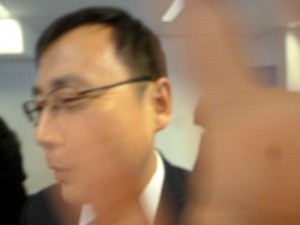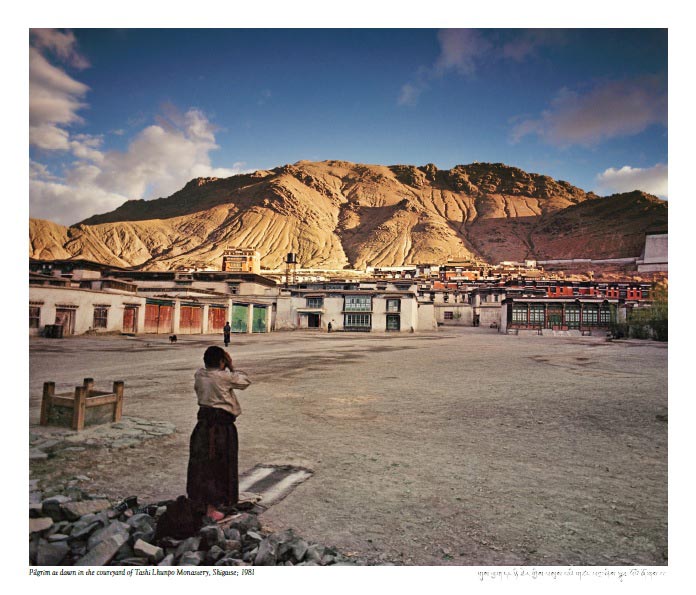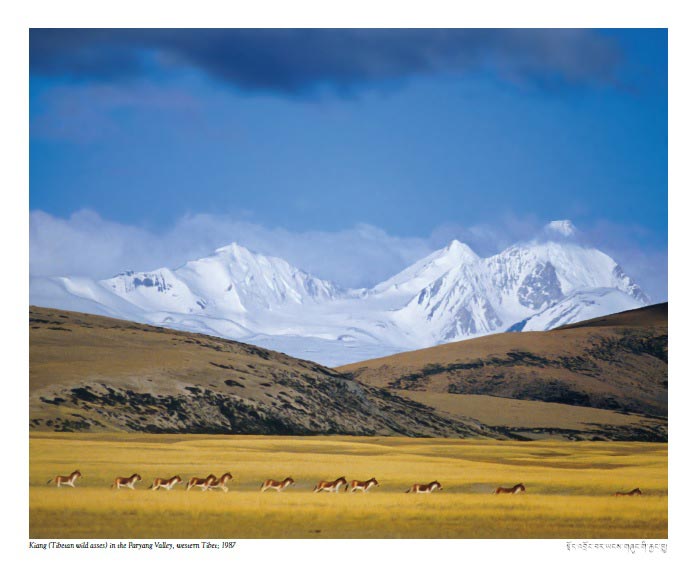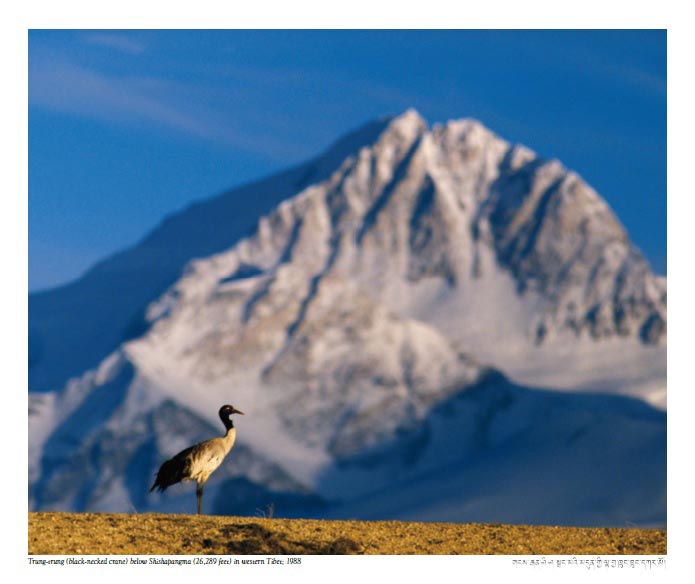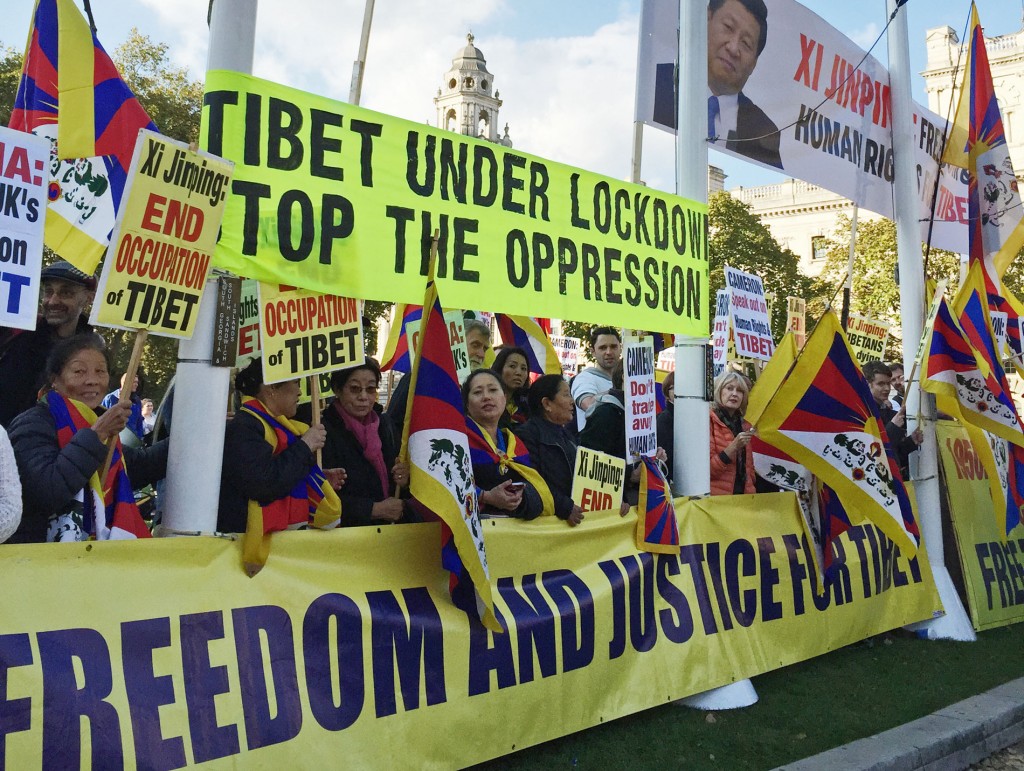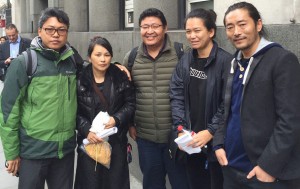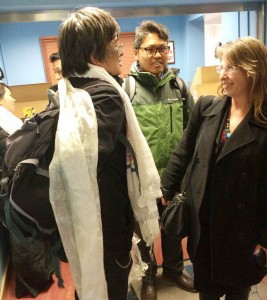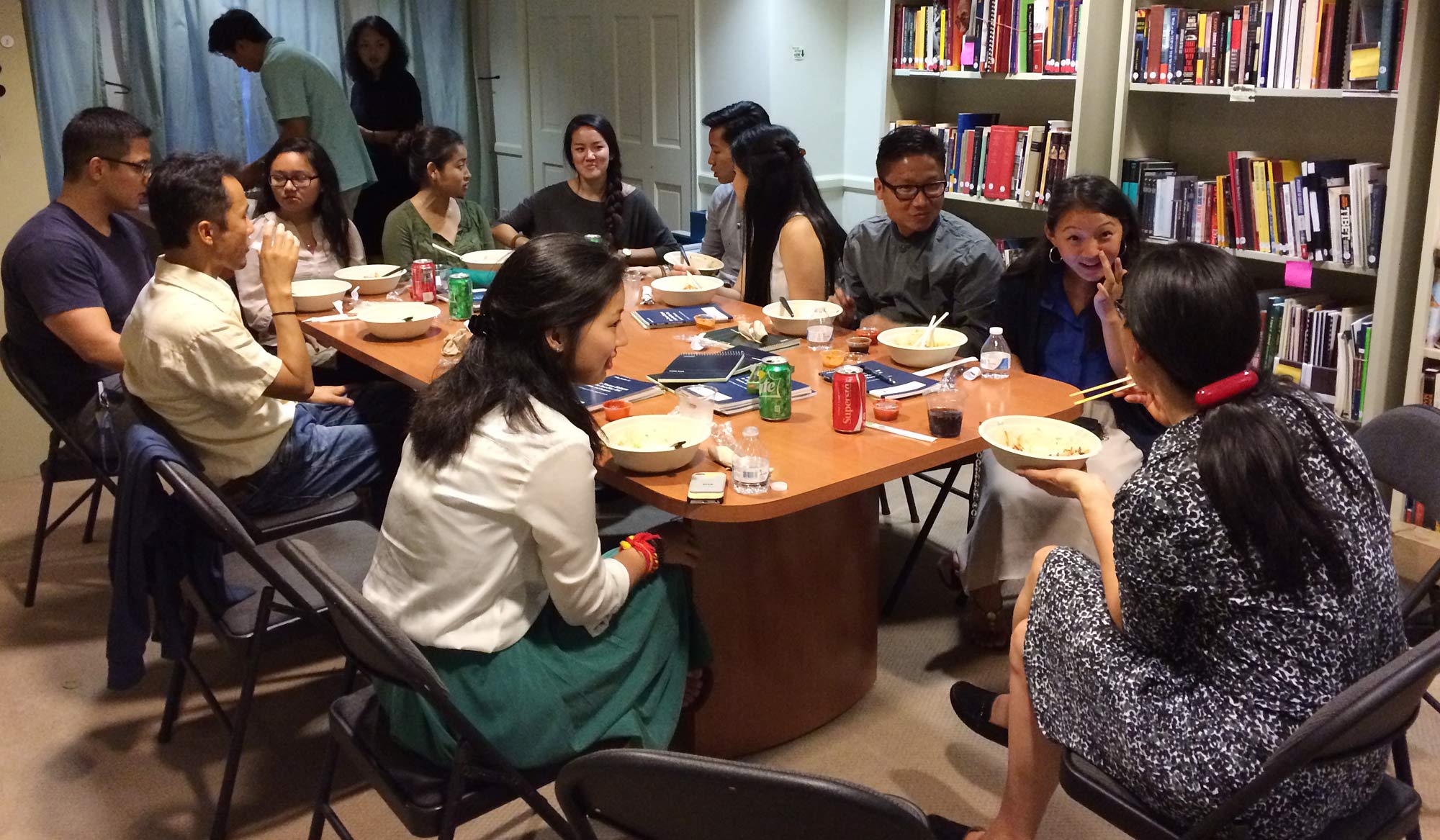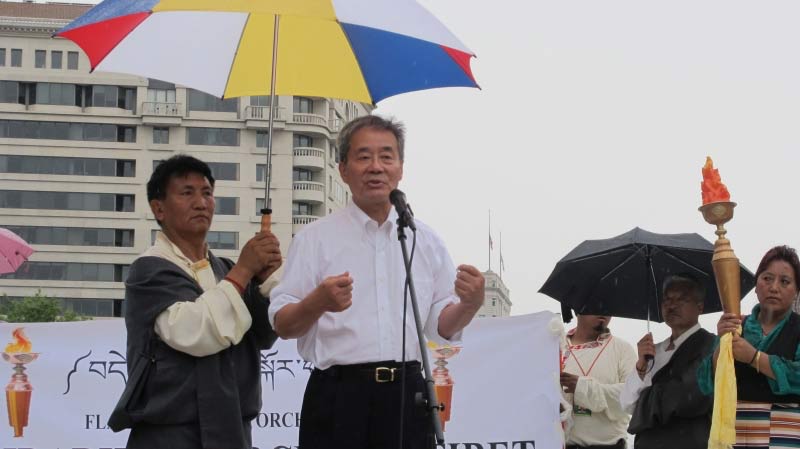
Harry Wu addressing the “Flame of Truth” torch relay in Washington, D.C. in September 2012 organized by the Tibetan community in North America to draw attention to the plight of the Tibetan people.
arry Wu, the human rights crusader who ensured the Chinese name for prison labor camps entered the Oxford English Dictionary, has died aged 79. He served the first period of his 19 years in prison camps in the fearsome Qinghe farm in the Beijing area, and it was there, on an ox cart leaving the graveyard, that he made a promise to himself that began his life’s work.
It was the early 1960s, at a time of desperate famine, and Harry had been returning to barracks after burying his friend, Chen Ming, a mild-mannered, reserved man who had been arrested as a ‘thought reactionary’ at around the same time as Harry.
That morning, in the cell, when Harry and the other prisoners woke up, Chen Ming didn’t move, and he didn’t sit up for the 4 o’clock meal. His cellmates assumed he was dead, like so many others in the prison camp – which housed inmates in an advanced state of starvation, kept apart from the healthier prisoners. An hour later, the duty prisoners arrived to take away Chen Ming’s body. At midnight, he came back. Harry was told that a duty prisoner in the storage room had seen a hand reach up and shake the door. It was one of the seven bodies piled up before being taken by ox cart to the mass graves. Everyone thought it was a ghost – but it was Chen Ming. He was not quite dead.
Harry persuaded the guards to feed his friend. “He is not an ordinary prisoner – he has come back from hell,” he told them. Chen Ming was given two corn buns; he grabbed them from the plate and stuffed them both into his mouth at once. A few seconds later, he clutched his stomach in pain and dropped to the floor. He was dead. His stomach, weakened from months of starvation, could not digest so much rich corn so quickly.
All night, Harry watched over Chen Ming’s body. As other prisoners slumbered around them, Chen Ming’s face brightened, taking on a rosy hue typical of the last stage of oedema, known as ‘the last redness of the setting sun’. Harry began to think. Usually he would save his energy by making his mind a blank. But that night he began to wonder what his own life was worth – what his friend’s life had been worth. “If I die tomorrow like Chen Ming, I thought, my life will have been worth nothing,” he said later. “But somehow I didn’t want to give up. I didn’t want to surrender.”
The next morning, when the duty prisoners came to take Chen Ming’s body, Harry refused to let go of his friend. The surprise of the security captain on duty at Harry’s emotions – an unusual occurrence in a prison camp where the living and the dead were often indistinguishable – outweighed his anger. He climbed into the ox cart and sat next to Chen Ming’s body, wrapped in a quilt among several other corpses. The cart rolled into a section of the camp known as 586 dotted with small pieces of wood marking the graves. Harry said: “Suddenly my mind became animated, and I had what seemed almost a revelation. Human life has no value here…It has no more importance than a cigarette ash flicked in the wind. But if a person’s life has no value, then the society that shapes that life has no value either. If the people mean no more than dust, then the society is worthless and does not deserve to continue. If the society should not continue then I should oppose it.” He made a promise to himself that he could not “slide into nothingness: one day we are all going to be a handful of dust. So we mustn’t waste our life.”
Harry had to reclaim some value from the fear and death that defined his life in the laogai, or Chinese prison camp system. He decided to do this by remembering everything he could about the camps, and by publicizing the truth about them when he was finally free. He began to train his mind by practicing elephant chess in his head, and retelling the plots of his favorite novels – Les Miserables by Victor Hugo and Dickens’ Tale of Two Cities among them. He used what Solzhenitsyn termed the “prisoners’ telegraph system: attentiveness, memory, chance meetings”. Whenever he was beaten during struggle sessions in the Cultural Revolution, he would shield his head from the blows. And when he was pulled from a coal mine after an accident, his first anxiety was that it might have affected his brain, and therefore his memory.
It was this promise that drove him to reveal to the world the true nature of the Chinese laogai system with the aim that it would take its place in history beside Treblinka and Dachau, and for the word laogai to enter the English dictionary, just as the acronym gulag has come to signify the Stalinist labour camps. In doing so, Harry had to “cross the line between life and death” once again.
More than 40 years after his release from the camps, Harry arrived in San Francisco with $40 in his pocket. His sister had arranged for him to be a visiting scholar at Berkeley, California, but she couldn’t support him financially, so he worked in a doughnut shop. At first, he tried to live a normal life, but he couldn’t forget the people he’d left behind, the prisoners like Chen Ming who had died. He was awarded a research scholarship at the Hoover Institute at Stanford University, and began the work he had prepared for during his imprisonment. He travelled the length and breadth of the USA to compile the first database of its kind of the experiences of laogai prisoners. He lobbied the US Congress and European MEPs about the prison camps and their exports to the West; he ploughed through Chinese internal documents to find the smallest details and the most shocking truths.
And then he decided he had to go back to China, risking his life, freedom and happiness to revisit the labor camps and gather evidence that would prove to the wider world that they exist. He found a devoted ally in his former wife, Ching-Lee, a Taiwanese secretary for the Minister of Economic Affairs in Taipei. Although Ching-Lee had never heard of the laogai until she met Harry in a coffee bar in Taipei, she became committed to his cause and in 1991, they spent their honeymoon filming labor camps undercover in China.
Harry made five dangerous journeys into China on his own and with Ching-Lee, documenting and exposing human rights abuses. For parts of the trips, he was accompanied by journalists from the American CBS network and Yorkshire TV, and once by the late, and much-missed, pioneering broadcaster Sue Lloyd-Roberts of the BBC. Each visit produced remarkable footage, giving the West its first glimpse inside the Chinese prison labor camp system. It forced the U.S. and European governments to take human rights abuses in China seriously, and U.S. Customs, under pressure from Congress, began to make seizure orders on suspicious goods coming in from China – it is illegal in the U.S. and U.K. to import prison labor. Once Harry disguised himself as a Chinese public security officer to enter a camp; at other times he posed as a U.S. businessman and a tourist.
Sue Lloyd-Roberts remembered that, during their undercover trip to China in 1994, Harry met a 29-year old prisoner who had been sentenced to 19 years for taking part in a street brawl. He was 23 when he was arrested, the same age as Harry when he was first detained in the late 1950s. Sue said: “Harry emptied our Jeep of food and gave it to the young man, who lived in a tiny shack guarding the piles of cotton picked by the prisoners. He sat with the prisoner, tears running down his cheeks, reliving and sharing the desolation and hopelessness that had overwhelmed him when, still in his twenties, he saw no future outside China’s prison camps. Our driver and I had to force him back into the Jeep before the guards returned and arrested us.”
On his trip in 1995, Harry was registered as a U.S. citizen and travelled under his legal name of Peter H. Wu. He got an entry visa, but knew that he was one of 49 dissidents who had been named on a secret government blacklist in May 1994. On this list he was labeled a ‘category 3’ person, which meant in effect that border authorities were to seek immediate instruction from higher authorities on how to handle the case, while their charges are kept either in isolation or under close surveillance. On 19 June, 1995, Harry was detained at the Chinese border post of Horgas when he tried to enter from Kazakhstan, together with North Carolina law student Sue Howell. They were escorted into Xinjiang and locked in a guest-house. Sue Howell was expelled, taking back a message for Ching-Lee from her husband: he told her that she should remember China was his home. His parents and his brother had died there under the Communist regime, and they were buried there. That was his place, and if he died there, that was OK he had said.
Within days of his arrest, an international campaign in the USA and Europe was gearing up to free him and his case became an international cause celebre. The International Herald Tribune depicted him in a convict outfit with other prisoners busily sewing ‘Free Harry Wu’ T-shirts, with a guard saying, “Prisoner Wu, you’ll be assigned to Machine 309 on aisle 9! And step on it – a big rush order just came in!” One man locked in a lakeside villa guarded by men with machine guns had become the focus of a storm in an already strained relationship between China and the USA.
When Harry was arrested in 1957, he didn’t have the benefit of a trial. In 1995, he had a four-hour trial and a lawyer. He was handed a sentence of 15 years for spying. The sentence came in two parts, and the second was expulsion from China. Harry didn’t know whether it would mean he served the sentence before being expelled and was astonished to hear the expulsion was to take place immediately. “So I had no choice, I had to go home,” he used to say, deadpan. He disembarked at San Francisco wearing jeans and a baseball cap, and quoting Hemingway.
Later in his life, in exile, Harry’s sense of purpose was entwined with a strong spiritual awareness; he was a Catholic, connecting to the kindness and teachings he remembered from his childhood at school in Shanghai. He became close to the Dalai Lama and was a passionate advocate of the Tibetan cause, including the stories of Tibetan prisoners such as Ama Adhe, who spent 27 years in prison in Tibet, in his Laogai Museum in Washington.
In the camps, Harry had clung to his love of literature by keeping his small collection of books, despite the danger if they were discovered. He loved art, enjoying the work of Rembrandt and Monet, and once said to me that if his life had been different he would have loved to be a painter. But that last glance at the graveyard numbered 586 – with pieces of quilt still sticking up from the earth after Chen Ming was buried – had seared itself into Harry’s memory, never to be forgotten. He knew the truth of the Russian proverb: “Dwell on the past and you’ll lose an eye. Forget the past and you’ll lose both eyes.”
Also see:
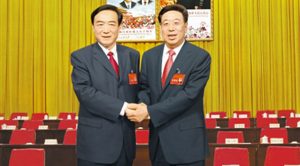

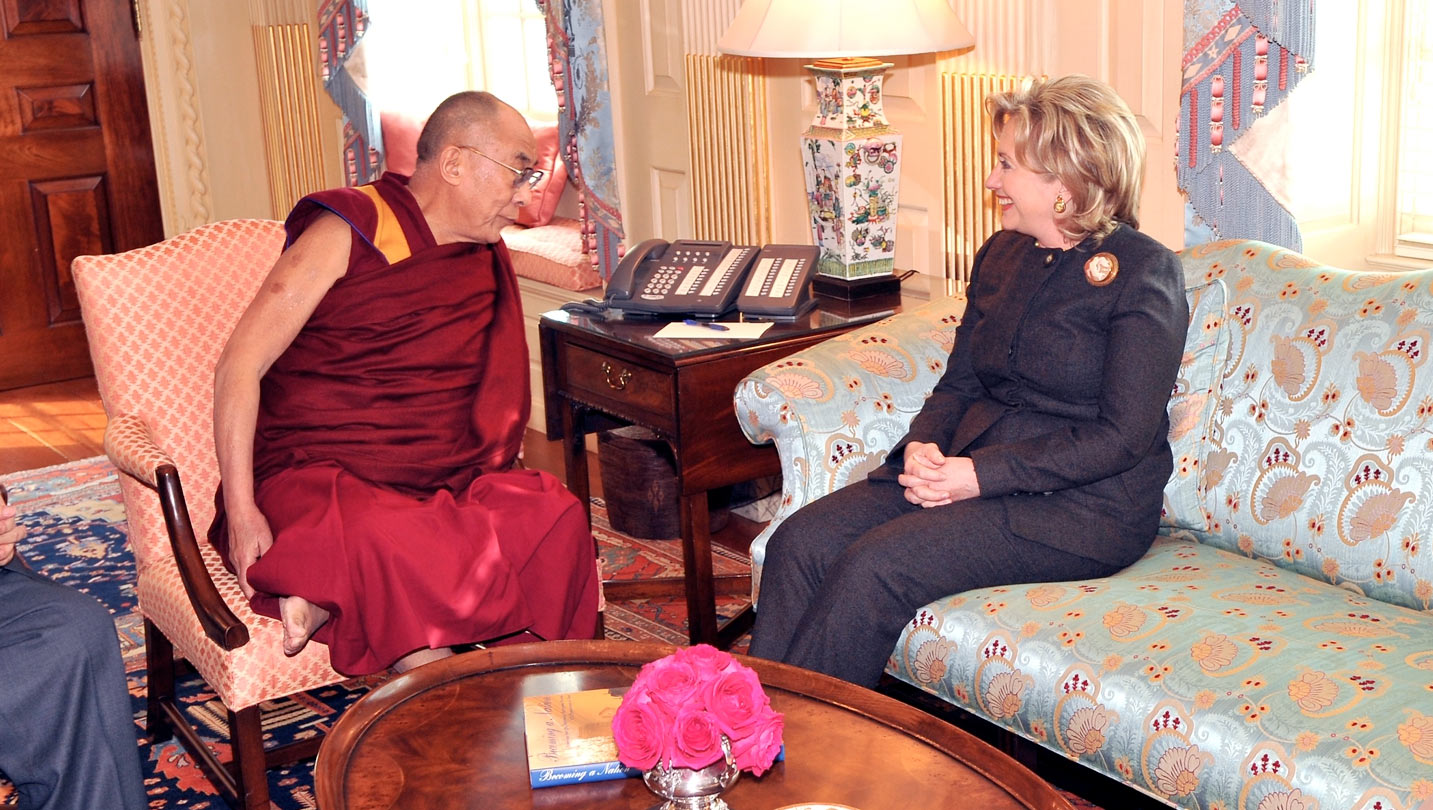
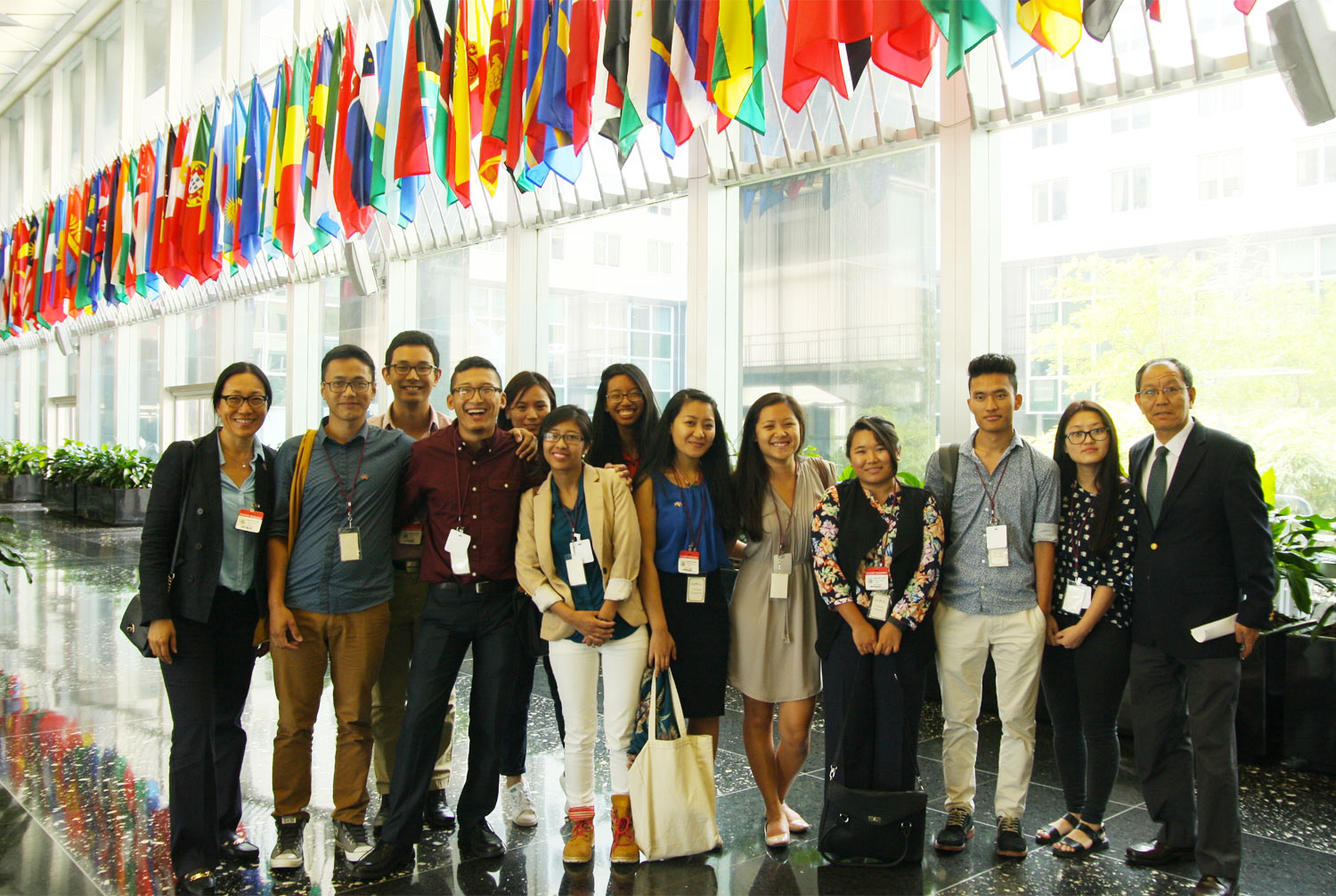
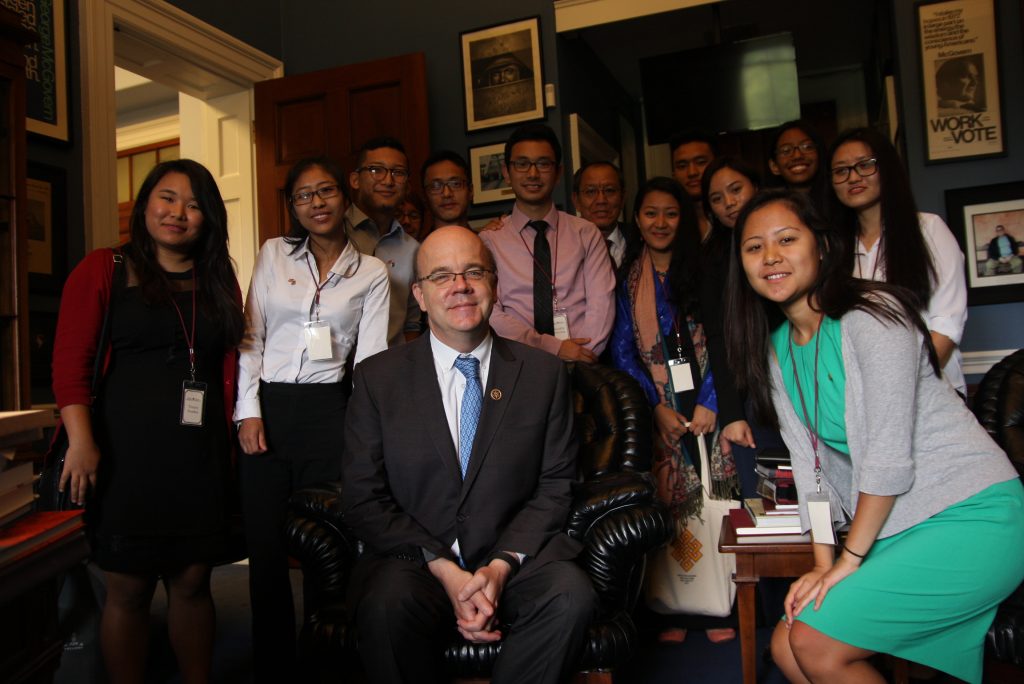 Our week was packed with visits to the State Department where we able to attend a media briefing, have an interactive session with Ambassador David Saperstein, and meet with Mr. Todd Stein, a senior advisor to the Under Secretary of State for Civilian Security, Democracy, and Human Rights and concurrently serves as special coordinator for Tibetan issues. We had the opportunity to visit the Tibetan Language Service for both Radio Free Asia and Voice of America where some of my peers were interviewed on air. We went on a White House Tour, had a meeting with the President of the National Endowment for Democracy, and also met Representative Kaydor Aukatsang la during our visit to the Office of Tibet. These were just the few things we were able to do in our busy week.
Our week was packed with visits to the State Department where we able to attend a media briefing, have an interactive session with Ambassador David Saperstein, and meet with Mr. Todd Stein, a senior advisor to the Under Secretary of State for Civilian Security, Democracy, and Human Rights and concurrently serves as special coordinator for Tibetan issues. We had the opportunity to visit the Tibetan Language Service for both Radio Free Asia and Voice of America where some of my peers were interviewed on air. We went on a White House Tour, had a meeting with the President of the National Endowment for Democracy, and also met Representative Kaydor Aukatsang la during our visit to the Office of Tibet. These were just the few things we were able to do in our busy week.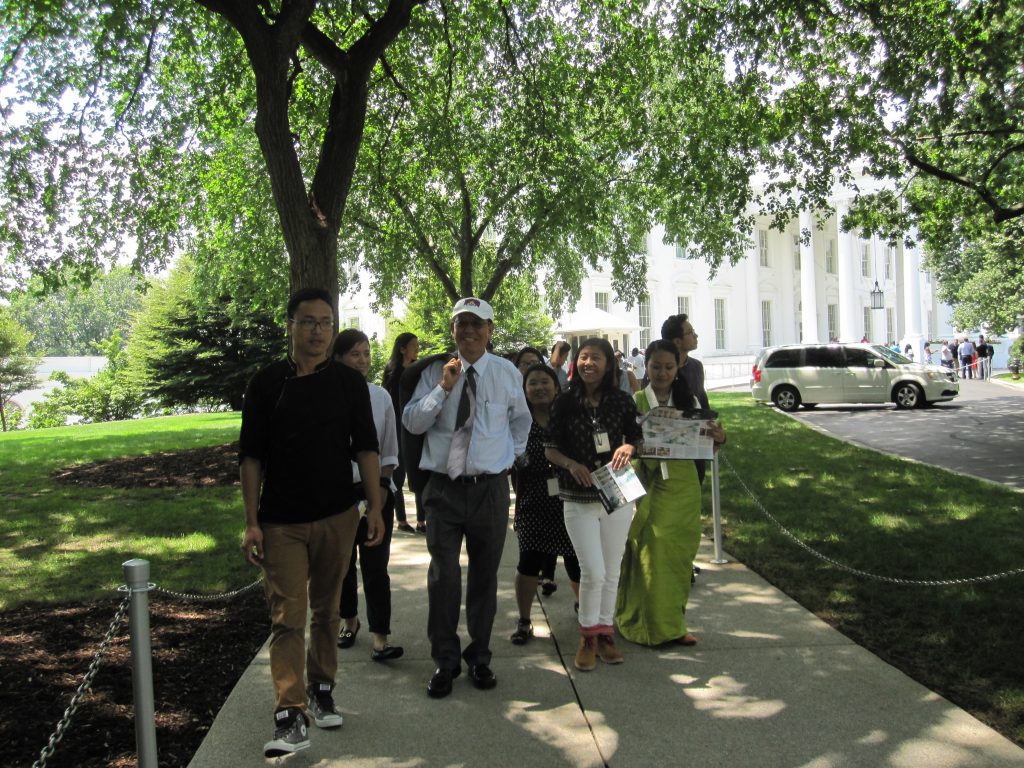 I highly urge every Tibetan college student to apply to the Tibetan Youth Leadership Program. The knowledge and friendships I have gained this week will be everlasting. The International Campaign for Tibet has created a unique and valuable program granting young Tibetans access to learn more about their identity and how to become leaders in the Tibetan American community.
I highly urge every Tibetan college student to apply to the Tibetan Youth Leadership Program. The knowledge and friendships I have gained this week will be everlasting. The International Campaign for Tibet has created a unique and valuable program granting young Tibetans access to learn more about their identity and how to become leaders in the Tibetan American community.